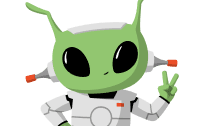JWST Reveals Early Galaxies' Coordination
This is a news story, published by Live Science, that relates primarily to The James Webb Space Telescope news.
The James Webb Space Telescope news
For more The James Webb Space Telescope news, you can click here:
more The James Webb Space Telescope newsNews about cosmology & the universe
For more cosmology & the universe news, you can click here:
more cosmology & the universe newsLive Science news
For more news from Live Science, you can click here:
more news from Live ScienceAbout the Otherweb
Otherweb, Inc is a public benefit corporation, dedicated to improving the quality of news people consume. We are non-partisan, junk-free, and ad-free. We use artificial intelligence (AI) to remove junk from your news feed, and allow you to select the best science news, business news, entertainment news, and much more. If you like this article about cosmology & the universe, you might also like this article about
galaxies spin clockwise. We are dedicated to bringing you the highest-quality news, junk-free and ad-free, about your favorite topics. Please come every day to read the latest galaxies news, James Webb Space Telescope Advanced Deep Extragalactic Survey news, news about cosmology & the universe, and other high-quality news about any topic that interests you. We are working hard to create the best news aggregator on the web, and to put you in control of your news feed - whether you choose to read the latest news through our website, our news app, or our daily newsletter - all free!
galactic rotationLive Science
•Science
Science
Is our universe trapped inside a black hole? This James Webb Space Telescope discovery might blow your mind

76% Informative
The James Webb Space Telescope has found that the vast majority of deep space is rotating in the same direction.
While around two-thirds of galaxies spin clockwise, the other third rotates counter-clockwise.
In a random universe, scientists would expect to find 50% of galaxies rotating one way, while the other 50% rotate the other way.
If the universe was indeed born rotating, it means that existing theories about the cosmos are incomplete.
Black holes form from stars or at the centers of galaxies, and most likely globular clusters, which all rotate.
That means black holes also rotate, and the axis of rotation of a black hole would influence a universe created by the black hole.
Another explanation for why the JWST may have seen an overrepresentation of galaxies rotating in one direction.
VR Score
84
Informative language
87
Neutral language
50
Article tone
informal
Language
English
Language complexity
62
Offensive language
not offensive
Hate speech
not hateful
Attention-grabbing headline
not detected
Known propaganda techniques
not detected
Time-value
long-living
External references
7
Source diversity
3
